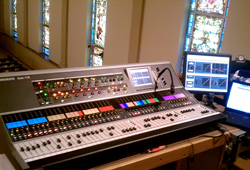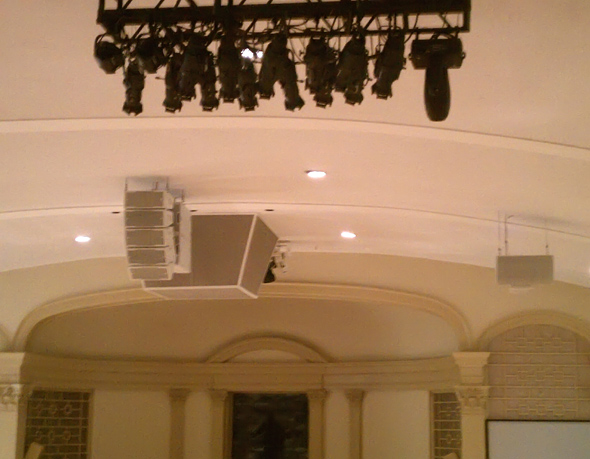
The lead engineer at First Baptist Tuscaloosa is Jack McCown, who has been mixing there for twelve years.
“The one thing I told myself coming into this was, whether it’s digital or analog, it’s still a mixer,” he says.
“Once you understand some basics of where things are and how they operate, it’s really the same. It didn’t take long to learn the board itself, not a hard transition at all.”
“And, I’m not a soundman by trade; I’m in financial services!”
Primary training was handled by Steve Garrett. “We knew that, once we got the speakers in the air, we would be dropping in the console on a Monday and taking the new system live the next Sunday.”
“Fortunately, the iLive has one of the more easy learning curves out there. I did most of the console configuration in advance, so they could concentrate on the operational side of things. Jack learned the desk very quickly, although I did go down there the first few Sundays to make sure everything would go smoothly for them.”
In addition to covering the main speaker cluster and subwoofers, the iLive also sends outputs to the church’s Aviom stage monitoring system, which feeds both personal mixers for the band along with several floor wedge monitors. Another feed goes to the legacy under-balcony speaker system, with a 55 millisecond delay to ensure cohesion with the mains.
Garrett also chose to use the vast DSP resources of the iDR10 MixRack to tune the house system. “The Turbosound speakers have onboard processing, and we did some tweaking there,” he says.
“But it was pretty minimal because of the way they’ve matched the amps and speakers. For tuning the room, and analyzing/suppressing feedback from resonant frequencies, we used the iLive. It was amazing how little we needed to do.”
“There were really only a few problem frequencies, and we just set up some real tight notch filters on the iLive and we were done.”
“We have different praise teams that sing each week, so we’re building an EQ library,” he says. “When I come in Sunday morning and see which team is singing, I just call up the EQ settings for each singers and assign them a microphone.”
“It’s so much easier. And I do the same thing with the preamps. If you’ve got a singer with a really powerful or really soft voice, you can save their preamp setting in a separate library. There’s so much flexibility in the system, it’s actually way easier than using an analog console.”
“Mixing here for 12 years, of course I got used to doing things a certain way,” says McCowen. “But I believe in doing whatever is easiest and makes it sound best.”
“When I saw what this iLive console could do and heard how the whole system could enhance the worship experience, I was sold. For me, going to a digital system was like going from a ’57 Chevy with a stick shift to a brand new luxury automobile. Why would you want to go back?”
Turbosound Website

